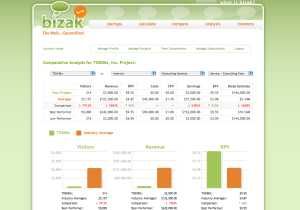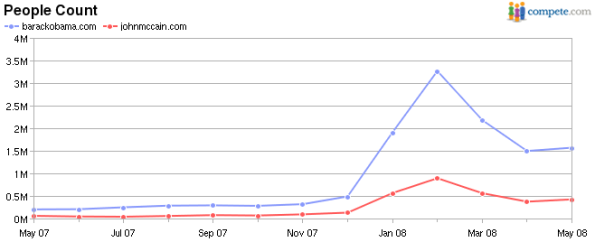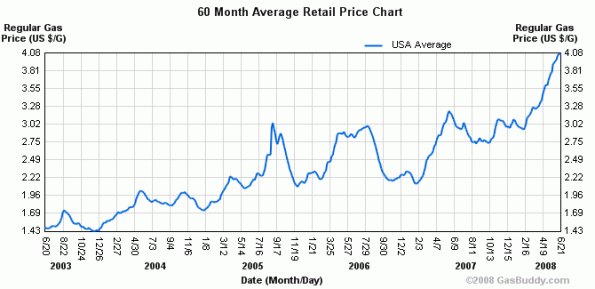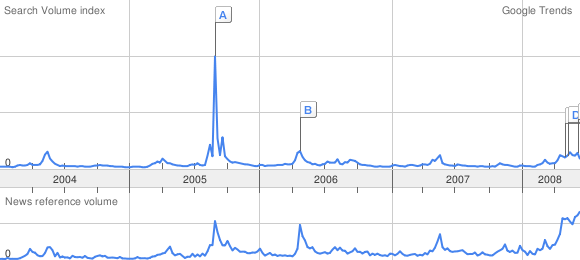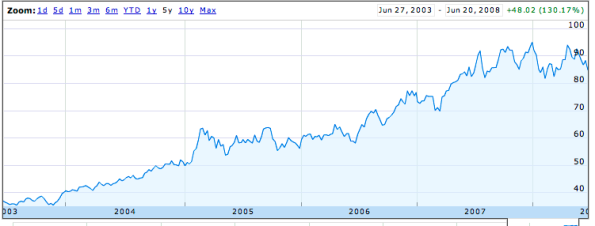Archive
Corporate Messaging & Customer Feedback Applications
Over the next week we’ll be launching our new Boston social messaging & customer feedback application called BostonTweet. This application is powered by Twitter and as you can see from the image below it enables me to ask a question which immediately generates user feedback – all of which is accessible to anyone who visits the website. We’re using the application to generate discussion about local Boston restaurants but it can be applied to any city or any business. The application is designed to generate discussion and feedback about a niche topic. That topic can be about a corporation, a city, a product or an interest – whatever the focus it all stimulates interaction & discussion that you control. By keeping customers discussing your brand you’re keeping them informed of your product and therefore marketing it to them in an unobtrusive way. Marketing that is spread via word of mouth and recommendations – a far more effective and affordable form of advertising.
Powered by Twitter
Integrated with Twitter these applications enable users to instantly communicate with their followers, customers and clients. Followers can be informed via the web and cell phone – both of which you can post from. From your cell phone you can broadcast a question to your followers from wherever you are and on whatever captures your attention at that exact moment. Your post is instantly posted to the application which then creates a unique URL for that post and the responses to it.
Feedback is essential for business – integrated with Twitter these applications bring customer feedback instantly to you, all of which is organized and searchable on your website. Via our user friendly admin panel, posts & replies can be categorized, organized and/or deleted based on a case by case basis. Asking your customers to speak their voice creates valuable customer feedback – essential for efficiency, product improvement and public relations.
All of the information that you and your followers post is indexed on your website for users to read, reply to and search for both via the website and on Google. Our custom corporate messaging application is beneficial for any business that wants to communicate with their customers – so basically that includes any business who wants to make money.
To learn more please contact Tom O’Keefe at tom[at]tokibiz[dot]net or 617-947-8071.
Web 2.No More? From Web 2.0 to Web 3.0
The recent market fiasco has everyone wondering whether Web 2.0 is alive or dead? The technology is indeed still alive (and advancing) but the focus is changing towards Web 3.0.
When the internet bubble burst in the early 2000s it acted as the dividing line between Web 1.0 (the original web) and Web 2.0. Web 2.0 didn’t commence the day after the bubble burst but rather it evolved over time with the rise of search, social networking, blogs, online videos and user generated content. Whereas Web 1.0 was about putting offline information (books, news, brochures) online, Web 2.0 is about sharing that information via social networks, blogs, online video, social messaging, etc. Web 3.0 will evolve with the integration of all this information into deeper analytical studies of online (and human) interaction, consumption behaviors & consumer data. A move more towards the semantic web.
Not only do I think that Web 3.0 will be about the quantifying of Web 2.0’s user generated data but I believe the focus (of web applications) will change.
In business, they’ll take a more active role in utilizing social networks and messaging platforms to communication with clients. This online interaction is efficient, effective and measurable, which provides corporations with analytical interaction to quantify and measure customer feedback like never before. The web has been evolving in this direction but the recent economic mess will force firms to embrace this technology now. The need to cut costs and be more accountable will propel the web towards Web 3.0 much faster than anticipated.
The second main change from Web 2.0 to 3.0 will be about focus. This past month has seen two monumental events. The financial collapse of the world economy and a historical election that broke centuries of racial inequality in the United States. Obama’s message was all about change and not only will there be change at home but also a movement towards changing the world’s perception of us. This means instead of meaningless applications that rate whether you’re hot or not there will be a movement towards uniting the online industrial western world with developing nations. Online video has already opened up our eyes to injustice around the world but it’s only the start. The tools of Web 2.0 will evolve to help all nations be self sufficient, energy independent (via new energy technology) and environmentally friendly.
Web 2.0 gave us the technology to test the effectiveness, success and power of online interaction. Global information, worldwide interaction & third world participation opens up a world of possibilities to both developing and industrialized nations. I already see the global need for western medical information with infoMedMD. Many of our visitors come from developing nations that likely don’t have access to quality medical care. With infoMeds, developing nations (with online access) can receive Western medical advice almost as if they specifically asked a doctor for a diagnosis.
Health 2.0 applications like Sermo, infoMedMD & PatientsLikeMe are in their infancy but they’re quickly providing patients all over the world with medical research, information and patient outreach – services that previously were only available via costly doctor visits. Online medical applications were definitely slow to adapt Web 2.0 technologies, but I think they’re some of the first players in Web 3.0. Interactive medical data applications used not for online enjoyment (or making friends) but rather to educate people in an attempt to make their lives better and healthier.
Whatever the third phase of the web is called it’s very likely that it has just begun. The current economic conditions have forced technology companies (and the venture capitalists funding them) to rethink their business models, focus their ideas and think of the next big thing. The third phase of the web will take everything that we’ve learned during Web 1.0 & 2.0 and make it better.
YouTube Sponsored Videos
Today Google & YouTube announced the launch of YouTube Sponsored Videos. Sponsored videos work almost exactly like Adwords (except its videos instead of text ads) and they’re along the right hand column of YouTube instead of at Google.com. This is definitely welcome news for non-viral video makers (aka Me!) who could use some additional exposure. The costs are on a CPC basis and like Adwords you can set a maximum daily budget.
While I think it’s good for video makers it might not be as popular with viewers who are use to a relatively ad free YouTube. Also sex videos are already clogging up the advertising space. Perform a search for a popular keyword and you’ll see sponsored results for sex and porn videos. This was bound to happen since they are video ads and not text ads, however YouTube definitely needs to monitor this before a backlash ensues.
All in all it’s a good start for YouTube and I would imagine it’s an idea that Google has been contemplating releasing for many months. Why? Because it’s not a new idea and the economy probably forced Google to release sponsored videos sooner than later to make up for a likely decline in online advertising spending.
One additional feature that I would like to see with the YouTube sponsored videos is the ability to also display my video along the Google Adwords column. I think it’s time for Adwords to start integrating videos within their text ads. Text ads were a huge revolution from the ghastly banner ads of the 1990s but now everything is about video and I think it’s time for Adwords to adapt.
3 Billion Photos on Flickr
Techcrunch reported yesterday that the 3 billionth photo was uploaded to Flickr on Monday. This number astonishes me but I quickly learned that this palls in comparison to the 10 billion photos on Facebook. The number of photos on Facebook more than doubled (from 4.1 billion photos) in just one year! Given that I just uploaded a dozen photos to Facebook today, and never uploaded a photo to Flickr, this shouldn’t surprise me but the exponential growth of the internet is amazing. Combine the billions of photos with the 1 trillion URLs and the web is becoming a very difficult place to get noticed.
Google Adsense & the Economic Turmoil
The marketing department is always one of the first departments to feel the heat during an economic downturn. With marketing budgets (and employees) likely getting cut, online advertising platforms like Google Adwords will see a decline in revenues. A decrease in Adwords will result in a decrease in Google Adsense earnings for website publishers. In response to this uncertainty Google Adsense just sent out the following email to all publishers.
Dear Publisher,
We understand that the recent economic turmoil has created a lot of uncertainty in the lives of AdSense publishers. During these difficult times, we’re continuing to invest in innovations that improve publisher monetization and advertiser value in the content network.
We’re focusing on further developing our product offerings and boosting ad performance for publishers. We recently announced advancements in AdSense for search and experiments to make ads more effective. We’re bringing DoubleClick technologies to AdSense publishers, and we’ll continue to launch new products and features. We’re also continuing to improve our offerings for AdWords advertisers, making it easier for them to target the Google content network. Features for advertisers, such as the new display ad builder, are designed to improve ad performance on AdSense publisher sites.
We’ll keep driving technological progress, but our best asset will always be our publisher partners. The strength of AdSense lies in the value of the content you bring to users and the quality of the sites you bring to advertisers. Our success is tied to yours. We look forward to partnering with you for the long term, and remain dedicated to helping you succeed.
Sincerely,
Bootstrapped
Well, last week was one heck of a week. Wall Street saw one of its worst weeks ever – actually the worst since 1933. After 8 consecutive days of decline the Dow lost 2,400 points, a 22.1% decrease in just 8 days. Both the Dow 30 and the S&P 500 reached their all time high on October 9, 2007 closing at 14,164.53 and 1,565.15, respectively. The Dow is down 40% to 8451.19 and the S&P 500 is down 42.5 to 899.22, since October 9, 2007. (Numbers as of October 10, 2008 close.)
Back in 2000 it was technology that drove the market down and this time around it’s the financials. It will be interesting to see how much technology will be affected by this massive decline. The internet boom of the late 1990s and early 2000s was spurred by massive internet IPOs that saw stock prices skyrocket for companies with shaky foundations. Over the last 5 years there has been some massive internet valuations but most of them never went public – this could work to the internet’s advantage this time around. During the Web 2.0 era many of these startups were acquired or financed by established companies. Of course some of these valuations were exorbitant, YouTube bought at $1.65 billion & Facebook valued at $15 billion, but they never IPOed. Facebook has been flirting with an IPO over the last couple of years but given the current market they’re definitely not thinking about it now. One benefit of remaining in private hands is the ability to steer your company the way you see fit – not the way stockholders see fit which is often influenced by emotion.
One benefit of downturns is a startups ability (or need) to bootstrap operations, be creative and run a more efficient business model. Based on Bizak’s startup statistics over 40% of websites rely on advertising to generate revenues. Today is a good day in the markets but it will likely take years to get back to the levels we saw just weeks ago. The first department to feel this pinch will no doubt be the marketing department. Advertising across the web will decline affecting not only startups but also Google. For startups this will hopefully result in new & creative business models – hopefully more startups will generate product sales, services and subscription models. If a website can’t monetize their free content (advertising, Google Adsense) then they might be forced to charge (micro-payments maybe) for it. Adsense was already becoming worthless and these recent events will likely make it worse.
Other startups will need to lower their burn rate to weather the uncertainty. I don’t think VC money will dry up as much as it did during the first half of the 2000s but it will probably take pause to access the trickle down effect. Right now the markets are running on a lot of emotion so we need time to pass before accessing the situation. Tough times tend to generate some of the most creative ideas – ideas that capitalize on the situation. Think of all the major web apps that you use today – Google, Myspace, YouTube, Facebook, LinkedIn. All of these apps were post “internet bubble” products that were launched during a time when many thought the web was dead. They helped bring the tech sector back in force. This time around it’s the financials struggling and maybe it will be tech that pulls them out?
All in all it’s a time to conserve and take the necessary steps to ensure the longevity of your application. According to Ron Conway, startups should heed the same advice he gave in 2000 which includes:
- If you are in a funding cycle, you should raise your funding as soon as possible and raise as much as possible.
- You must aggressively examine and pursue M&A opportunities (unless you have over 12 months of cash reserves!) ro insure you have critical mass (including funding, customers, rolodex power, market
share, cash, synergy, etc.).- Be realistic on valuations – they will fall so be ready and willing to co-operate.
- Look for corporate partners to invest so you can raise more money. You should also consider a sale of your company to your corporate partners.
- While it’s safe to say entrepreneurs have had negotiating leverage with the “down draft” in the market, the VC community will start exercising their leverage.
For me I have two startups and three more on the way. None of these applications are funded and all of my “salary” is in equity which will require me to wait another 1-3 years. During this time I’ll continue to launch new and exciting applications but I also need to prepare for the unexpected. To accomplish this I’ll likely join/partner with a well funded startup/company where we can equally benefit during this exciting time. Interested? My resume and my bio.
It’s an exciting time because social and economic events create a snow ball of technological innovation. Innovation that can grow quickly and adapt efficiently. Whether this is the end of Web 2.0 or not doesn’t matter since no matter how you define it the next wave of innovation has just begun.
Google Adsense or Advertising Model?
According to Bizak, in house advertising campaigns are more profitable for entrepreneurs than Google Adsense. Websites who implement Adsense have an EPV of $0.07 compared to sites who manage their own advertising who earn $0.17 per visitor. I actually think the Adsense EPV ($0.07) is a bit high and it will come down with more data. However, compare Adsense to subscriptions ($0.35 EPV), consulting fees ($2.29 EPV) and product sales ($10.64 EPV) and Google Adsense is a poor decision for startups and websites.
One benefit of Google Adsense is that it’s very easy to implement and the costs associated with that implementation are very low. Sites with Adsense have the lowest CPV (Cost per Visitors) at just $0.03 – In House Advertising is more difficult to implement and therefore have a CPV of $0.12. To no surprise product sales requires some of the highest startup costs with a $4.34 CPV – subscriptions are at $0.39 and consulting registers a $1.62 CPV.
July 2008 Search Engine Market Share
comScore released its July 2008 search engine market share numbers and once again Google has gained ground – up 0.4% from June to 61.9%. This share increase was taken directly from Yahoo, likely due to the Microsoft fiasco, who lost 0.4% to 20.5%.
MSN Live search is still in a distant third place with 8.9% market share – my guess most of that traffic comes from those people who still have a Hotmail account. I can’t for the life of me figure out how Microsoft indexes one page over another but there appears to be less competition for the top spots. For example, my infoMedMD site is ranked #3 on MSN for medical symptoms but on page 3 for Google. Even though Microsoft barely makes a blip on the search barometer I still receive the vast majority of my traffic from them. So in this particular case it’s better for me to be #3 on MSN than page 3 for Google. However, I would of course prefer to be #3 on Google where I would receive 50 times more traffic for the keyword medical symptoms!
1 Trillion URLs
Google announced on Friday that the web is big, real big. To be exact Google has just indexed the 1 trillionth URL – an astounding number. When Google first indexed “their web” in 1998 they had 26 million pages, in 2000 that number was 1 billion and in July 2008 it hit 1 trillion.
With 1 trillion URLs how does a website stand apart from the rest? How is that URL found? With more URLs becoming optimized the chances of being found on Google (even though you’re listed on Google) is very slim. What if each one of these URLs were optimized for Google? Search engine optimization would be a dead industry and search would be useless for traffic – unless you’re one of the lucky 10 on the first page.
Eventually half of these URLs will be optimized for Google and when that happens SEO will be useless. What’s next for internet marketing? YouTube? Facebook? Will Google still provide websites with traffic?
In other Google News the company also announced that they are hitting 40 languages to cover the languages read by 98% of Internet users.
Microsoft Live Search Coming to Facebook
Microsoft Corporation (NASDAQ: MSFT) announced yesterday that that they will be integrating Microsoft Live Search into Facebook. This really should come as no surprise since Facebook can thank Microsoft for their excessive valuation – the least they can do is allow Microsoft to promote Live.
It remains to be seen if Microsoft can do a better job, then Google with Myspace, monetizing their search partnership. Back in 2006 Microsoft was also in contention for Myspace’s search rights but they lost to Google. As I’ve noted in a couple of previous articles, Facebook Worth & Facebook Revenues, Microsoft’s $15 billion valuation of Facebook is almost three times higher then the next closet valuation. Microsoft’s valuation of Facebook is still absurd but I’m sure a lot of the reasoning behind it was to guarantee that Google didn’t beat them again.
The Technology Behind Tesla Motors
Hybrid cars are nice but they’re not going to make a dent in our dependence of oil. A change won’t come until the innovators who spurred technology focus their innovation (and money) on the automobile industry.
With Tesla Motors this revolution has begun! Partially financed by Larry and Sergey, Tesla Motors has built an electric vehicle fueled by a lithium ion battery that goes from 0 to 60 in 4 seconds! With the ability to travel over 200 miles on a single charge the Tesla Roadster doesn’t need any oil. In fact the beauty of an electric vehicle is that its energy can be derived from multiple sources such as natural gas, coal, wind and others – thus allowing it to adapt to changing times.
The Tesla Roadster is now in production, however at a price tag that most us can’t afford. The promise in Tesla comes in the supply of their lithium ion batters to other manufacturers. In fact Mercedes is planning on releasing electric versions of its A & B class vehicles by 2010 and the battery supplier is Tesla Motors – with that the revolution begins.
For more detailed information about the technology behind Tesla Motors please read “How it Works“.
Comparative Analysis, Web Analytics, Financials & Benchmarks
Last evening, in addition to infoMedMD, we at TOKiBiz also launched the industry benchmarks for Bizak.com.
If you’re already registered with Bizak just login and you’ll see a nice new navigation bar for you. If you haven’t registered with Bizak you can do see via the website worth page.
For additional information and definitions about the benchmarks please click on the image below. For a full size screenshot please see full size screenshot.
Social Networks Worth
In a number of previous posts (below) I’ve used the Bizak Calculator to compute the revenue valuations of social networks and internet companies. These valuations put heavy emphasis on current revenues but it also gives credit for positive earnings per visitor (EPV).
Techcrunch recently compiled a very interesting (but at times very confusing) model on valuing social networks. The Techcrunch model values social networks according to the countries where individuals are using that application. They then use those numbers in conjunction with the internet advertising spending for each individual country to compute the value of social networks. Techcrunch can explain their math much better then me so read the Techcrunch article and compare them to the Bizak valuation of:
Other articles that focus on social networks include:
- Location Based Social Networks
- From Social Networks to Business Applications
- Top Social Networks
- Boston Business
Articles focusing on Startups:
Gasoline Prices & Google Trends
Below is a chart from GasBuddy that shows the average cost of gasoline in the United States from 2003. As we all know spikes in gasoline prices usually begin in the spring and lasts throughout the summer.
Below is Google’s search volume since 2004 for the phrase “gas prices.” Spikes in search and news volume also peak in late spring/summer when gas prices show their biggest gains.
As you can see from the chart (below) search volume reached its peak around September 2005 when average gasoline prices hit $3 for the first time. This was a direct result of Hurricane Katrina on August 29, 2005.
For the next two years average US gasoline prices never peaked much higher than $3. This changed in June 2008 when average gasoline prices topped $4 for the first time. Unlike 2005 search volume didn’t spike as much, however Google News searches did.
And for a final comparison, Exxon Mobil’s stock chart since 2003. Exxon Mobil currently has a market cap of $448 Billion, compare that to (approximately) $233 Billion in 2003.



